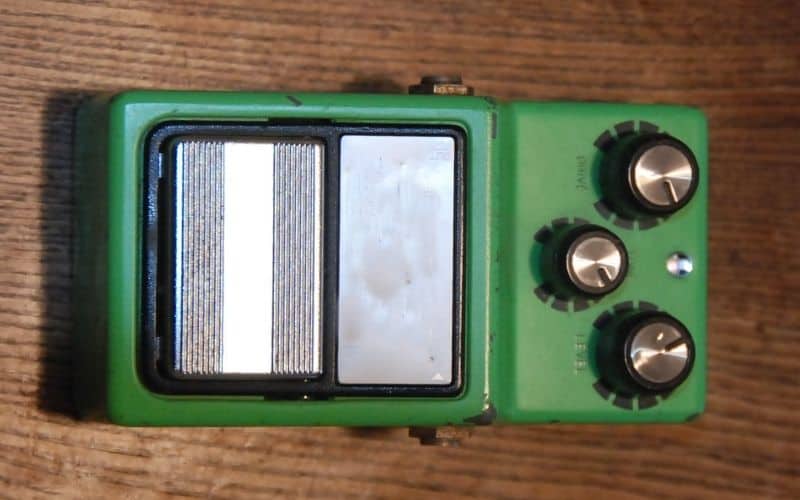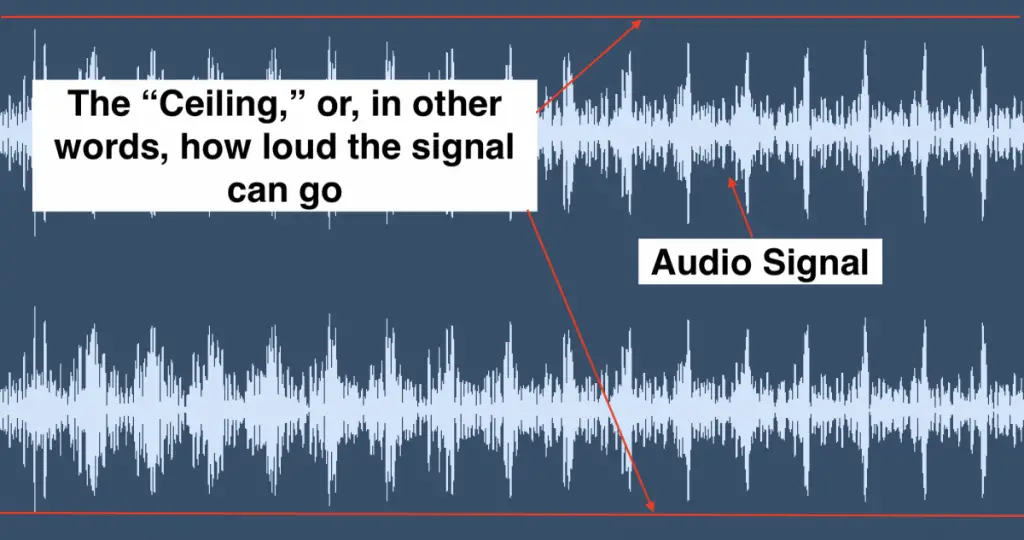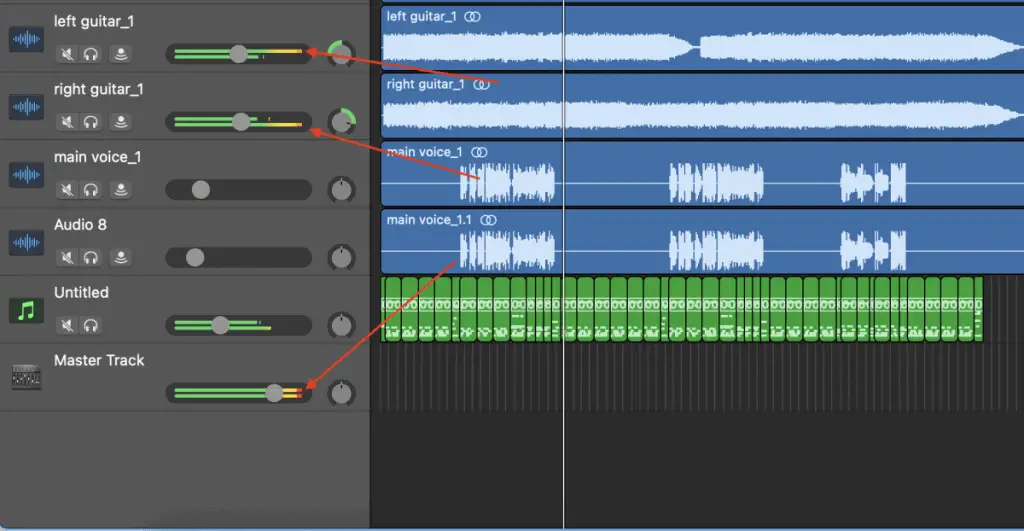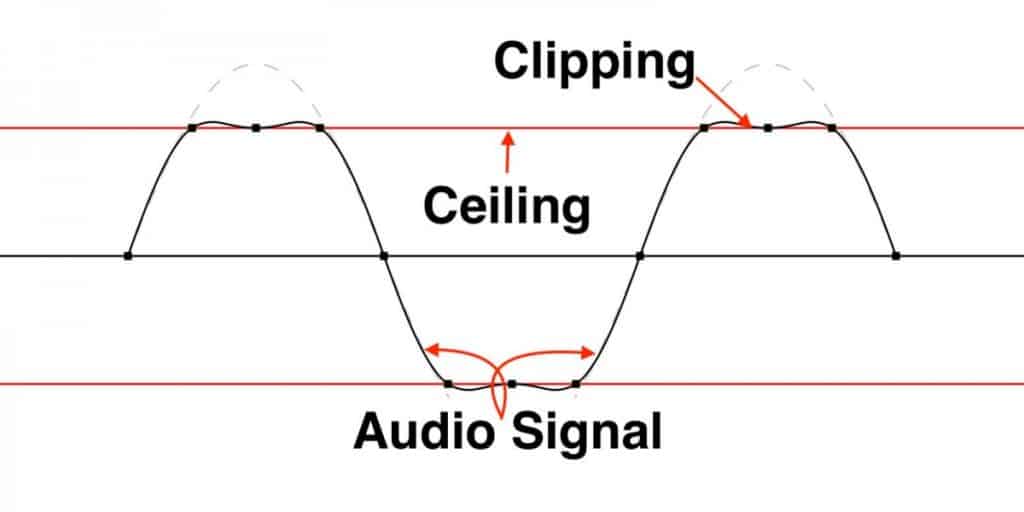There are a lot of effects available for the guitarist out there, including delay, flanger, overdrive, distortion, and more, however, one of the most common effects units is overdrive. This is a pedal that creates a gritty, distorted, sound out of your guitar signal and it first came about when players began using valve/tube amplifiers a long, long time ago.
A guitar overdrive pedal is a device that pushes the guitar signal to the point of distortion. Soft clipping, or overdrive, is achieved by inserting clipping diodes in the feedback loop of the audio device, and it mimics an “overdriven” amplifier without increasing the volume to the maximum.

Overdrive is easily one of the most commonly used pedal types on the market. The most popular overdrive unit ever created is the Ibanez TS 808 Tubescreamer. There are other units on the market as well, but the Tubescreamer is probably the most popular.
Guitar Overdrive Pedals Explained
The Ibanez TS 808 Overdrive pedal explains what overdrive is right in its title. It’s a “Tubescreamer.” As I already said in passing above, a tube amplifier can be played loud enough or pushed to the point where the guitar signal will actually start to crackle, distort, and make a sound that’s called “overdrive.”
It’s because the signal is being pushed to the limit; it has been “overdriven,” or maxed out, to the point that the amplifier can no longer handle it. And an overdrive pedal basically imitates this sound, but of course, it doesn’t actually push the amp to its limit.
Overdrive is accomplished by the manufacturer by inserting clipping diodes in the audio circuit, and it pushes the signal slightly above the threshold right inside the unit, which means you don’t have to play your guitar so loud with an amplifier to achieve the same effect.
If you were to actually drive a tube amplifier to the point of distortion without using an overdrive or distortion pedal, you would have to play your guitar so loud that a lot of people in the area would likely be pretty upset with you.
It isn’t hard to imagine how guitarists managed to stumble upon overdrive, however, many probably didn’t like the sound of it at first.
A few players began to utilize the distorted, gritty, sound, and now we’re at the point where guitar distortion is not only desirable but completely necessary. There are hundreds if not thousands of guitar pedals on the market, and many of them do the exact same thing, but with minor variations (I’ve written all about them here).
Essentially, an overdrive pedal is an effect that allows you to push the signal to the maximum, but without actually causing anyone to hate you. Put simply, an overdrive pedal gives you a much gentler and soft distortion, and it sounds the best when the signal is coupled with a tube amplifier of some kind, for instance, a Marshall JCM 800.
A lot of the confusion surrounding the topic has to do with the terminology. For example, there are a few words we use to describe essentially the same thing, although, each term comes with a slightly different meaning, especially in relation to specific activities.
The terms, overdrive, distortion, clipping, and breaking up, are fairly similar, however, how they differ is how the sound is achieved as well as the amount of distortion or drive it’s referring to.
Overdrive – Also called “soft clipping,” because overdrive is an audio signal that has been pushed only slightly above the device’s threshold. Overdrive is essentially the same thing as clipping, distortion, and breaking up, but it connotates a certain amount of distortion: a small amount.
Distortion – Distortion is the same thing as overdrive, however, most guitarists use this term when they’re referring to A LOT of overdrive. If overdrive means “soft clipping,” then distortion means “hard clipping,” because the signal has been pushed far above what an overdrive pedal would do.
Clipping – Clipping isn’t all that different from distortion, however, most people refer to a signal as “clipping” in reference to audio recordings. For example, if your recordings are too hot, which means the signal is too strong, there will be clipping.
If you want a clean bass guitar sound, but the player recorded the signal too strong in the DAW or recording device, most people would refer to it as a “clipping” signal.
Breaking Up – Breaking up is another term that’s not all that different from clipping. It just means that the signal has been pushed to the point where it is now breaking up and it’s no longer clean.
Using the last picture shown below as a frame of reference, you can see how “breaking up” makes sense. The signal is no longer being allowed to flow naturally; it’s breaking up when it hits the ceiling of the device.
What Is a Distorted or “Overdriven” Audio Signal?
There are a number of ways that you can distort an audio signal. The first thing to understand about it is that a distorted audio signal, simply put, is just an audio signal that has been pushed to the point that the device, whatever it may be, can no longer handle it.
Once they’ve been pushed past the device’s threshold, the signal becomes a distorted version of what it should actually sound like.
Every amplifier has a particular threshold at which it can function. And this is normally determined by the “power rating,” of the amplifier, which shouldn’t be confused for the maximum volume. There is a difference between the power rating and the maximum volume.
Take a look at the image below. It shows your average audio signal, as well as the ceiling, which is how much the signal is allowed to oscillate and move.
The power rating is the ceiling. It’s the point where the amplifier can no longer handle the audio signal, therefore, it starts to flatten out and cause what’s also called “clipping.”

The same idea can be seen in your average Digital Audio Workstation, for example, Garageband, Logic Pro X, Fl Studio, etc. When a signal starts to clip, the VU meters will turn a red color like what you can see in the image below:

And in the following image, you can see how the waveform has literally been “clipped” off. The wave format is supposed to oscillate naturally and without being stopped by the ceiling.

When a signal clips, it means the audio workstation or device can no longer handle it, and it starts to distort and clip. Typically, we don’t want this sound in the vast majority of our recordings, however, there are cases when we do want this sound, for instance, on our guitars, especially if we’re playing metal, blues, or rock.
And that’s essentially what overdrive and distortion are. We’re pushing the audio signal to the point where the audio device can no longer handle it, except we’re doing it on purpose, rather than trying to avoid it.
And that’s precisely what an overdrive pedal allows us to do: it pushes the signal to the point of clipping, right in the unit, rather than in the amplifier that way the amp doesn’t need to be cranked to the maximum.
What’s the Difference Between Overdrive and Distortion?
Depending on how much the signal has been pushed to its limit, also determines whether we refer to it as overdrive or just distortion. For example, an overdrive signal just means it’s clipping every so slightly, but distortion, on the other hand, especially distortion used for genres like heavy metal, is a signal that has been pushed so hard that the signal is hitting the ceiling a lot more.
The more you push the signal above the threshold, the more intense the distortion becomes. Simply put, overdrive is when the signal is being pushed gently above the threshold of your audio device, whereas distortion is the same effect but it’s being pushed at a much higher level.
YouTube Video Tutorial
Conclusion
To wrap everything up, a guitar overdrive pedal is a device that processes a guitar signal in such a way where it has been overdriven to the point of distortion. It’s also called “soft clipping,” because the signal is being pushed only gently above the threshold.

 Written By :
Written By :